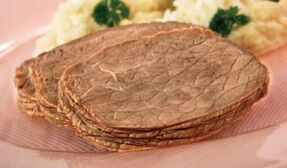
Tell me, do you want to go on a diet and get your ideal figure, but forget about weight loss? There is no doubt that this is not only the dream of all destiny. For many people, this is still a dream, but not for those familiar with Japanese food. She made you achieve such outstanding results. But is everything so simple? Let us talk about this today.
Is it really Japanese?
Although people think that this method of weight loss is the creative idea of Japanese scientists, its menu composition will at least cause some confusion. Well, please judge for yourself, the main diet of the classic Japanese is rice, seafood, almost no fat, but carbohydrates dominate, green tea is considered the most popular drink. What about our diet? As a kind of beverage, it contains coffee, and the Japanese disrespect it. It has a lot of fat and almost no carbohydrates. Its basis is protein-containing food. Take eggs, by the way, Japanese people are not very welcome either. The Japanese diet is related to the diet mentioned by people only because it contains fish and the diet itself is low in calories.
What makes Japanese food unique?
Despite the above contradictions, Japanese diet has won the hearts of many slim hunters, and this is for good reason. Everyone who has tried it at least once praised the results of this technique. After all, it only lasts thirteen days and can work for two years. In other words, you can only keep yourself tight for two weeks, and then for a few years, you will usually forget your diet and gym. This is not a myth, not a morbid fantasy of a person, but years of experience. Thousands of people from different countries have confirmed this. However, in order for the technology to work so effectively, all the conditions imposed by it must be strictly and accurately observed, not a device that deviates from the prescribed rules.
Are Japanese eating rules very difficult?
No, it is more difficult, they can bear it. You can't achieve your goal, can you? Therefore, the Japanese diet lasts only 13 days. Her daily diet arrangements are arranged in the smallest details, which can neither be changed nor ignored, otherwise you will not be able to achieve the desired results. Since this diet is very difficult and contains only low-energy food, it is strictly forbidden to eat more than once every two years. Of course, unless you are the enemy of health.
Like any weight loss method, this diet has food restrictions. The sugar, salt, baked goods, lemonade, and alcohol on the menu have been completely removed. Bananas and grapes are forbidden from the fruit. The oily skin should be removed from the chicken before cooking. The green list includes gas-free mineral water, pure boiled water, most vegetables and fruits, but the dishes are really plain. If you want to lose weight effectively for a long time, you have to put in some effort. The rules of flowing water and paved stones also play the best role here. Okay, now go straight to the dishes.
What is included in the Japanese food menu?

This is the exact timeline and product type of the method.
It is strictly prohibited to change, delete or add any content.
First day
Breakfast on the first day was just a cup of black coffee. Lunch-two boiled eggs, one part cabbage seasoned with vegetable oil and a glass of tomato juice. A small piece of fried or cooked fish can be eaten for dinner.
The next day
Breakfast on the second day includes a cup of black coffee and toast. At lunch, they season fried or boiled fish with a portion of vegetable or cabbage salad with a spoonful of vegetable oil. Dinner is 100 grams of boiled beef, washed with a cup of kefir.
The third day
The breakfast on the third and second day is the same. The lunch menu includes large zucchini fried in vegetable oil. For dinner, boil 200 grams of beef with cabbage salad, add vegetable oil and 2 hard-boiled eggs to taste.
Fourth day
Only coffee for breakfast. The lunch is represented by three big carrots with vegetable oil, 15 grams of hard cheese and a fresh egg. Dinner includes any other fruits other than bananas and grapes.
The fifth day
Fresh carrots and lemon juice are provided for breakfast. Lunch is represented by cooked or fried fish and a glass of tomato juice. Dinner is the same as the day before.
Sixth day
Drink coffee at breakfast. At lunch, cook half of the chicken and traditional vegetable salad. For dinner, use two hard-boiled eggs and a cup of fresh carrots seasoned with vegetable oil.
Seventh day

Japanese breakfast tea, one cup is enough. At lunch, boil 200 grams of beef and any fruit. Dinner can be provided upon request on any day of the diet (except the third day).
Eighth day
Have coffee again for breakfast. Lunch and dinner start on the 6th day.
Ninth day
Breakfast includes fresh carrots and lemon juice. Lunch-large boiled or fried fish and a glass of tomato juice. Eat any fruit for dinner.
Tenth day
The menu on the tenth day is the same as the diet on the fourth day.
Eleventh day
The diet on the eleventh day is exactly the same as the diet on the third day.
Twelfth day
Like a twin brother, like the next day.
Thirteenth day
This day happens to repeat the first day.
Is the Japanese diet a wonderful technique or a dangerous delusion?
Well, all the points of the Japanese diet have been covered, the rules have been announced, and the menu has been announced. Take it. From the first day of creating the above method, the last controversial issue that has been plagued people will be eliminated to eliminate excess weight. In other words, is the Japanese diet a weird technique or a dangerous delusion? Maybe neither. Japanese weight-loss technology does create miracles in appearance, but they are our own efforts to obtain. There is nothing dangerous here, unless of course you suffer from some serious diseases, don't abuse coffee, don't starve yourself. Well, if you have any questions, please consult your doctor before starting the diet.





















